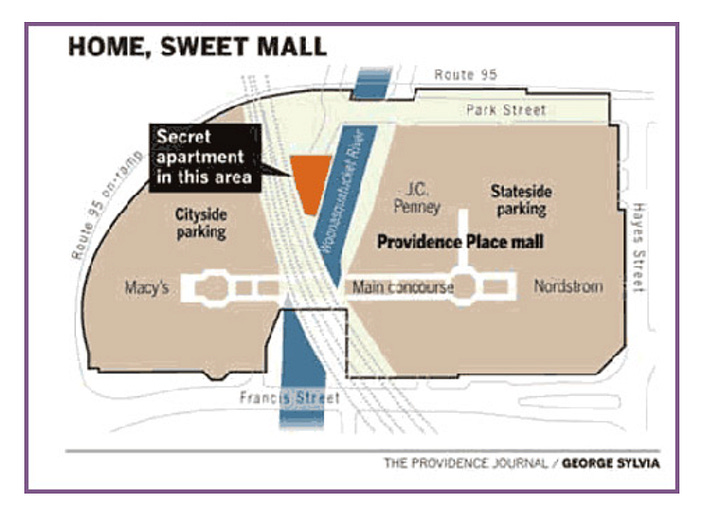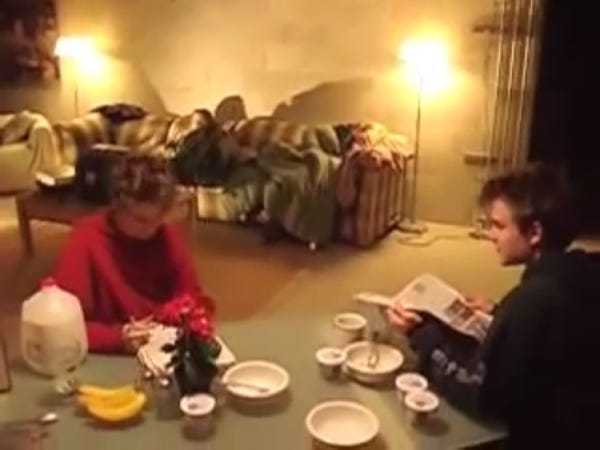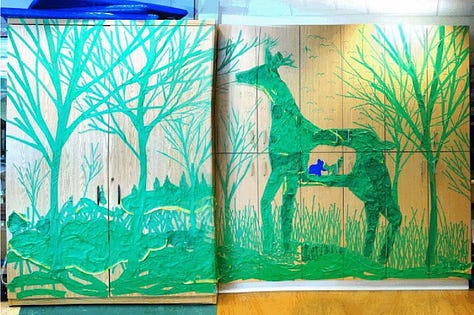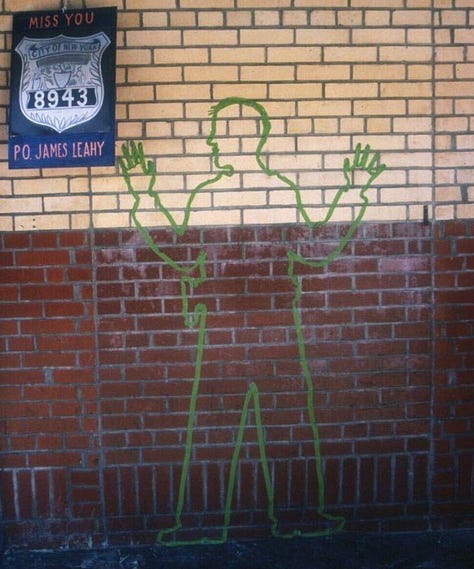Secret Mall Apartment
Dir. Jeremy Workman (2024). Watch if you like scrappy projects, innovative interiors, and punchy public art.
The greatest thrill of my childhood was going to the mall. As you may imagine, shopping in Las Vegas was imbued with theatrics. Nothing is without spectacle in the neon oasis. The Forum Shops in Caesars Palace had a small production involving animatronic talking statues set in the kingdom of Atlantis where the father needed to choose which child of his would inherit his throne (think Succession with more fire and water), the Galleria Mall had a dancing bears, and the Meadows Mall’s main attraction was a carousel. The mall was a stage for opulent commodities and humble homewares. The fantasy of what your life could look like with a new set of pots or work shoes were presented with imagination. Shopping was a show

Vegas is a hotbed for transactions of all kinds. Retail is as important as gambling. I’ve never placed a bet or pulled down the handle of a slot machine, but I certainly have taken a financial risk on buying an article of clothing and seeing if it will make it into my wardrobe rotation. Emerging from the arid soil are shopping centers that keep the spark of a glamorous oasis alive in the imagination of Las Vegas visitors. Nearly every casino has a retail thoroughfare you can wander, losing time and possibly funds even without sitting at one of the card tables. The more I think about this, the more I realize that malls and casinos aren’t as different as they appear. You get lost in the excitement of trying to do something that could change your life or you leave with your head in your hands as the impact of the credit card swipe radiates from your wallet to your consciousness.
Recently, I went to a screening of the documentary Secret Mall Apartment. This film recounts the risk a handful of Rhode Island School of Design students took to create a private space for themselves within the Providence Place Mall, where they “resided” from 2003 to 2007. This was a spectacle conceived in secret for a private audience. A risk was taken to see if they could reclaim a slice of their lives from within the belly of consumerist Goliath.


Never underestimate the levels art students can get scrappy. Prior to the mall’s construction, our main protagonist Michael Townsend, and his collective of friends utilized abandoned mills that were nearby as spaces for living, art studios, and music performances. However, since there was essentially no rent and the location was about to be desirable due to the forthcoming retail behemoth, real estate investors started to sniff around and kicked out the artists. A tale as old as time.


When the mall was built, they began analyzing its grand construction and noticed a pocket of space was hidden away. They finally discovered it after climbing through the nooks and crannies other folks would never think to venture into. Their ingenuity was rewarded with room for them to make whatever they wanted. Throughout the film we see them haul couches, lamps, cabinets, and an array of home goods sourced from antique shops and the mall they resided in, up to their secret apartment, squeezing them in too-small hallways and precariously pulling them up a narrow flight of stairs. Thank god they had the foresight to document their “home” project with a small Pentax camera they conceal in an Altoids tin.



What struck me the most was how their apartment was an active art installation against gentrification and an idea incubator for public projects that did something for others. I say something because I can’t articulate the perceptions others felt when seeing Michael’s ephemeral murals made of tape for the local children’s hospital (and sometimes with the children as a collaborative project) or the silhouettes echoed in tape that dotted lower Manhattan in honor of those that lost their lives during 9/11. Risk is fuel for meaningful creation.
By 2007, the apartment was discovered and the collective was banned from the mall. That is, until the release of this film.
Syllabus:
Meet Me by the Fountain: An Inside History of the Mall by Alexandra Lange
I highly recommend this book and I’m due for a reread.
“Few places have been as nostalgized, or as maligned, as malls. Since their birth in the 1950s, they have loomed large as temples of commerce, the agora of the suburbs. In their prime, they proved a powerful draw for creative thinkers such as Joan Didion, Ray Bradbury, and George Romero, who understood the mall's appeal as both critics and consumers. Yet today, amid the aftershocks of financial crises and a global pandemic, as well as the rise of online retail, the dystopian husk of an abandoned shopping center has become one of our era's defining images. Conventional wisdom holds that the mall is dead. But what was the mall, really? And have rumors of its demise been greatly exaggerated?”
Corduroy by Don Freeman
I would be lying if I didn’t mention that this also lit up in my mind while watching this film. My dreams of staying overnight in the mall began after reading this countless times. I always wanted to take him home!
“Corduroy lives in the toy department of a big store. Day after day he waits with all the other animals and dolls for somebody to come along and take him home. Yet as soon as Lisa sees him, she knows that he’s the bear for her. Her mother, though, thinks he’s a little shopworn—he’s even missing a button! Still, Corduroy knows that with a bit of work he can tidy himself up and be just the bear for Lisa.”







Mall culture forever
Need to watch this documentary (and read that mall book!!)